- Home
- Bill Bryson
The Road to Little Dribbling Page 30
The Road to Little Dribbling Read online
Page 30
In the evening, Chris and the boys and I walked around the city centre and were dazzled, as all visitors to Liverpool are these days, for the whole place has been practically rebuilt. At the heart of the city now is the Liverpool One development – forty-two acres of stylish new apartments, restaurants, cinemas, hotels, department stores and shops. It is like a new city. We dined at a Pizza Express and generally partied wildly, as four guys on the town do, until about 8.30 pm, when we returned to the hotel and called it a night.
After breakfast the next morning, I walked with Chris and the boys to Lime Street station, where they were catching a train back to London. I had more of Liverpool I wished to see and walked out past the Anglican cathedral to a neighbourhood known as the Welsh Streets.
John Prescott, during the last Labour government, had a mad plan, called the Pathfinder Initiative, to tear down 400,000 homes, mostly Victorian and Edwardian terraced houses, in the north of England. Prescott claimed, on no evidence, that house prices there were too low because of an oversupply of stock. Mercifully, Prescott didn’t have the brains or focus to complete the plan, but he still managed to spend £2.2 billion of public money and bulldoze thirty thousand houses before he was stopped. So at precisely the time that one part of the government was talking about the need to build hundreds of thousands of new homes, another part of the same government was trying to tear down as many of them as it could. You simply can’t get madder than that.
Nowhere were Prescott’s demented ambitions more keenly pursued than on Merseyside where 4,500 houses, nearly all comfortably lived in and doing no harm, were compulsorily purchased and swept away. Amazingly, the local council is still trying to tear down homes, mostly in the Welsh Streets area (so called because the streets have Welsh names) on the edge of Princes Park. It is a neighbourhood of snug and settled terraced houses of the sort that people pay fortunes for in Fulham or Clapham. But here the houses are empty, their doors and windows blanked off with metal plates, as they await a needless destruction. It is a seriously dispiriting sight. So I strolled back to town through the university quarter, where the housing is pleasant and appreciated and Liverpool doesn’t seem like a city run by idiots.
I returned to Lime Street station to catch a train to Birkenhead Park, across the Mersey. I couldn’t see from the departures board how to get there, so I asked at the information desk and the young man who served me was an American, which fairly astounded me. We ended up talking about the Chicago White Sox, which I believe may be a first at a British Rail information booth. He pointed me in the right direction, and twenty minutes later I was at the main entrance to Birkenhead Park.
It is a typical large Victorian city park, with playgrounds and playing fields, some woodlands, a picturesque lake with a boathouse and rustic bridge. Couples walked, dogs and children scampered, men in shorts chased after a rolling ball on a soccer field. It was a pleasant, wholly conventional urban park on a Sunday morning, but Birkenhead has one special feature: it is the oldest city park in the world.
It was designed by the great Joseph Paxton, former head gardener at Chatsworth, and laid out to resemble the grounds of a stately home. It opened in 1847 on 125 acres of former wasteland. It is almost impossible to imagine now what a novelty this was. There were parks of a sort already, mostly in London, mostly on royal land like Kensington Gardens and Regent’s Park, but admission was limited, tacitly or even sometimes explicitly, to people of an elevated class. Birkenhead was purpose-built for the amusement of all people, and it was an immediate success.
Four years after it opened, Frederick Law Olmsted, an American journalist, was on a walking tour of the north of England when he stopped at a Birkenhead bakery and the proprietor urged him to go and have a look at their new park. Olmsted was so taken with what he found that he went back to America and became a landscape architect. He designed Central Park in New York City, then went on to build more than a hundred other parks all over North America. So this was the template from which all other public parks are descended, rather a remarkable thought.
Back at Lime Street station, I boarded a train for Manchester. We trundled through a featureless landscape of boggy-looking farms and worn-out suburbs. You would never think it (I was having a day of ‘you would never think its’) but this was perhaps the most historic stretch of railway on the planet, where the very first passenger trains ever ran, on thirty-three miles of track linking Liverpool with Manchester.
My interest was to do with a forgotten nineteenth-century politician named William Huskisson, who was once widely esteemed – at one point was even tipped to be Prime Minister – but is remembered now chiefly for being the first person in history killed by a train. The occasion for this emphatic milestone was the official opening of the Liverpool and Manchester Railway, the line I was on right now, on 15 September 1830. Eight hundred of the most eminent people in Europe, led by Britain’s Prime Minister, the Duke of Wellington, came to Liverpool for the entirely novel experience of riding a manmade conveyance at speed. They were loaded, chattering, on to eight separate trains.
Near the halfway point, at Newton-le-Willows, Huskisson’s train stopped to take on water. Most of the passengers got off to stretch their legs and chat. As they stood alongside the tracks, George Stephenson’s Rocket, the fastest and most famous train of its day, came hurtling towards them on a parallel line at twenty miles an hour. It takes a little imagination now to conceive of people being put to flight by the approach of a train at twenty miles an hour, but of course they had never seen a machine moving laterally and it left them a touch disoriented, Huskisson most of all. He moved about in contrary directions, and somehow managed to get himself between the train and where it was going with predictably grisly consequences.
Dreadfully mangled, he was lifted on to the train that had just struck him and rushed to Eccles, the nearest town. As the Rocket sped onwards, Huskisson had the satisfaction, if he could feel any, of knowing that he and his fellow passengers were now travelling faster than any humans had ever travelled before – thirty-five miles an hour. Huskisson was taken to the vicarage at Eccles, where he was attended by a local doctor, but his injuries were too severe and he died that evening.
A few hundred yards beyond Newton-le-Willows station, on the right-hand side as you travel towards Manchester, is a memorial to Huskisson, fixed to the wall of a little service building, at the spot where he met his tragic fate. The memorial is only visible from a passing train, and you have to look out carefully for it. I sat peering and watched as the monument flashed past – much too fast to read – very possibly the only person on the train who knew the history of this line, even more possibly the only one who cared, very certainly the only one who wasn’t listening to music or shouting at a child.
Fifty thousand people lined the funeral route for Huskisson in Liverpool, and the city’s shops and factories shut for the day as a mark of respect. Seventeen years after his death, his widow commissioned a statue of Huskisson, incongruously dressed in a Roman toga, and presented it to Lloyd’s of London, the insurance market. Lloyd’s didn’t really want it and, once Mrs Huskisson was safely dead, gave it to the London County Council, which didn’t want it either, but found a home for it in Pimlico Gardens, one of the smallest and least visited parks in London, where for the past one hundred years it has been prized as a lavatory by pigeons but otherwise not noticed much at all. And that, I think, is as it should be.
At Manchester Piccadilly, I went to the men’s room for a pee (it’s what I generally do first upon arriving anywhere these days) and discovered that it now costs 30p to wee in Manchester. Even more annoyingly, the turnstiles into the men’s room don’t give change and only accept 10p and 20p coins. How hard can it be to make a machine that gives back 20p if you put in 50p? Really, how hard?
Sighing, I went to the food court area to buy a cup of tea in order to acquire the proper assortment of small coins, and as I was hungry I bought a sandwich, too. I paid takeaway prices even though I took t
he food to a seat just ten feet away, a shorter journey than I often take when dining in. It seems a little strange to be taxed on the basis of whether you have passed through a door or not. I have to say I have never understood the concept of Value Added Tax anyway. Consider my sandwich. Where’s the added value? I’m certainly not adding any. With every bite I take, I must be reducing its value, until finally there is no sandwich at all and no value either. Clearly, any added value is coming from the sandwich vendor. So why am I paying their tax? You see why I’m confused?
The idea of charging tax on food eaten in a restaurant but not on food taken away from it is completely backwards, if you ask me. It rewards people for taking packaging out into the wider world where much of it ends up as litter, and imposes a surcharge on those whose leftovers are responsibly disposed of indoors and whose plates and cutlery are more likely to be washed and reused. That seems the wrong way round to me.
In my experience, in many establishments like Starbucks and Pret A Manger they don’t always ask if you are eating in or taking away and they certainly don’t monitor to see if you are being truthful – and why would you tell them when all being honest gets you is a metal tray? Altogether, Britons spend £12 billion a year on takeaway food. VAT on that would raise £2.4 billion. You could build a lot of schools and hospitals with that, or just sweep up streets more effectively. Perhaps you could use it to buy some litter bins. There is no country in the developed world – not one – that has fewer litter bins on its streets than Great Britain. And there is not one country in the developed world – again, not one – that has more litter on the ground than Great Britain. Does anyone here see a relationship?
VAT on food would be just the first of many new taxes I would bring in. I would also introduce male jewellery tax, stupid ponytail tax, carrying an open umbrella even though it’s stopped raining tax, texting while walking tax, earphone music leakage tax, walking much too slowly in crowded places tax, tattoos on knuckles tax, dribbled paint on the pavement tax, answering a question by saying, ‘How long is a piece of string?’ tax, having an irritatingly small dog tax, and vending machines that don’t give change tax. Taken together, I believe these would erase the national deficit within months.
As I sat eating my sandwich, I watched people coming and going through the 30p toilet turnstiles across the way. All three turnstiles were constantly engaged. I estimated that one person went through each turnstile every ten seconds. That’s £5.40 a minute, over £3,000 a day. If you figure, conservatively, that the turnstiles are active for ten hours a day, six days a week, that comes to roughly £1 million a year, just to let people pee – giving a whole new meaning to the expression ‘income stream’. I wouldn’t tax that money. I would appropriate it.
I had decided already not to stay in Manchester. It was a Sunday and I couldn’t face spending a Sunday evening wandering around a dead city centre. I wrote about Manchester at some length in Notes from a Small Island, and I have been back many times since, and I am happy to state here for the record that Manchester is vastly improved from what it used to be. You should go and see it yourself. Just don’t go on a Sunday.
I had somewhere else I wanted to be: Alderley Edge. I had read in The Economist that Alderley Edge is one of the ten richest towns in England. It has 700 high-net-worth individuals (which is another way of saying millionaires) in a population of 4,600. Alderley Edge is in pretty countryside fifteen miles south of Manchester and is famous as the home of nearly all the best northern football players and managers. Among those who live or have lived there are Cristiano Ronaldo, Rio Ferdinand, Carlos Tevez, David Beckham, Wayne Rooney, Alex Ferguson, Mark Hughes and lots of others. Several Coronation Street stars live there, too, apparently. If a Google news search is any guide, many of them seem to spend their time crashing Ferraris, collecting speeding fines or doing something to their houses that their neighbours don’t want them to do. But many of them live quietly, too. I once met someone who lived in Alderley Edge at the same time the Beckhams did, and she told me that they often saw them in Waitrose or on the High Street, just going about their business. This was in the days when David Beckham couldn’t step out of a limousine anywhere in the world without being mobbed, but at home in Alderley Edge he could walk around just like a normal person. I thought that was lovely.
I was delighted to find that Alderley Edge is a very attractive place, with a handsome, well-maintained high street. It doesn’t have a bookshop or a huge amount in the way of practical businesses like ironmongers or butchers, but it was dazzlingly well provisioned with cafés, bistros and wine bars. I thought it would be like Beverly Hills, filled with overwrought houses with big walls and automated gates, but there wasn’t much of that at all. Most of the houses were big, but not ostentatious, and on the whole seemed reasonably restrained and tasteful. In a strange way, it was disappointing and comforting at the same time.
In the evening, I called in at a pub called the De Trafford and was pleased to find a table with some discarded sections of weekend newspapers on it. I don’t usually read newspapers any more, so it was a bit of a treat.
I decided to give up newspapers a few years ago after reading a long news story in The Times about a journalism student at Cornwall College in Camborne who had come up with an idea to go to the United States and challenge all those zany laws that we all know exist over there. The article helpfully gave thirteen examples of these amusing laws – that it is illegal to fall asleep in a cheese factory in South Dakota; that it is illegal to say ‘Oh, boy,’ in Jonesborough, Georgia; that it is illegal in Carmel, New York, for a man to go outside while wearing a jacket and trousers that do not match; that it is against the law to take a lion to the movies in Baltimore, Maryland; and so on. The idea, The Times reported, was that the student would travel through America, get himself arrested repeatedly for breaking the laws, then come home and write a book about it.
It happened that at this time I had been invited by a friend at City University in London to deliver their annual lecture on the practice of journalism, so I decided to look into this particular article as a way of discussing the commitment to accuracy of the British press. I got in touch with twelve of the thirteen places cited by The Times and enquired about their odd laws. I couldn’t find anyone to contact in Jonesborough, Georgia, because there is no Jonesborough, Georgia. For the others, I phoned or wrote to the police chief or mayor or whoever else seemed most likely to have an answer. In two cases, I couldn’t get a response from anybody. In all the others, the local officials assured me that there was no such law and never had been. As someone from the Baltimore mayor’s office observed, if you take a lion into a cinema there you can expect to be arrested, but they have never enacted a statute for that offence for the obvious reason that it is unnecessary. All the laws, in short, were made up.
So if we consider the article again, the situation we have is that a young journalism student who hadn’t gone to America, hadn’t written the book, hadn’t been arrested and hadn’t got a single one of his facts right still managed to get almost a full page of coverage in The Times. I would give that boy an A. As for the Times news editors, I think somebody should sit down and have a little chat with them.
Now I am not quite so vapid that I would stop reading newspapers over one foolish article, but I did stop reading them regularly and quickly discovered that I didn’t miss them very much at all. There was a time when the highlight of my week was coming home with the Sunday Times and Observer and sitting down to read amusing reports from far-flung places by Clive James or television reviews by Julian Barnes or long essays by Martin Amis. I don’t want to be dismissive of a whole generation’s journalistic endeavours, but, well, just look at the weekend papers now. I picked up one of the magazines.
‘If yellow is good enough for Amal Clooney, it’s good enough for Anna Murphy,’ read the strapline on the lead article. Now I have nothing whatever against either of these people. I don’t know anything about them and hope they have nothing
but happiness in their lives. But with respect to what colour clothing they’ll be wearing this summer, I don’t give a paramecium’s shit.
‘I learnt early on never to wear yellow,’ confided Ms Murphy in the opening sentence of her report, then with candour added: ‘Which just goes to show how much I used to know.’ That was too overpowering a thought for me to try to assimilate, so I turned the page and found an article suggesting sixteen ways to ‘pimp up’ my salads. I took a moment to wonder what my wife would say if I suggested to her that we should pimp up our salads. Elsewhere I found guidance on what to look for in facial serums (a very big price tag apparently), how to acquire a sexy pout, a solemn report on transgender issues which was really an excuse to run some new pictures of Bruce Jenner in drag, and much more in similar vein. Is it really just me getting old or is it actually the case that all people under the age of thirty are basically now about ten years old? I looked at a couple of other weekend sections and they were much the same, so I put the papers to one side and pulled a book from my bag and read it instead.
I do have a little David Beckham story, by the way. It involves my publisher and friend Larry Finlay, whom we last encountered, eyes pulsating, in the prologue. Well, one day not long ago, Larry had been to the London Book Fair or something and stopped for a drink on his way home at a pub in Little Venice. He was sitting at a table reading a manuscript when somebody said:
‘Do you mind if we sit here with you, Larry?’
Larry looked up and it was David Beckham with another man.
‘Of course,’ said Larry in amazement and moved his papers to give them some space.
‘Thanks, Larry,’ said David Beckham.
‘How do you know my name?’ said Larry, mystified but proud to be recognized.
‘Because it says “Larry” on your name badge, Larry,’ David Beckham said brightly.

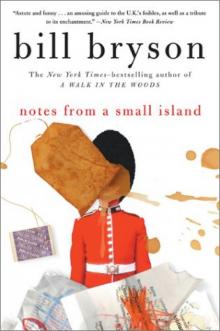 Notes from a Small Island
Notes from a Small Island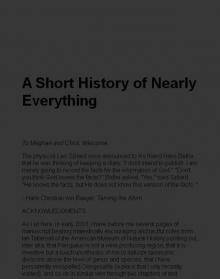 A Short History of Nearly Everything
A Short History of Nearly Everything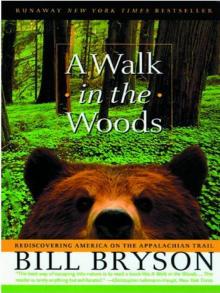 A Walk in the Woods
A Walk in the Woods I'm a Stranger Here Myself
I'm a Stranger Here Myself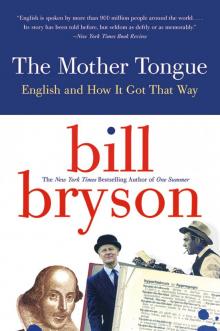 The Mother Tongue
The Mother Tongue Shakespeare
Shakespeare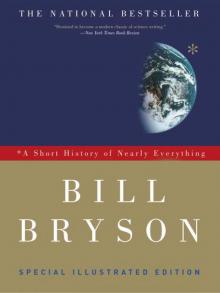 A Short History of Nearly Everything: Special Illustrated Edition
A Short History of Nearly Everything: Special Illustrated Edition The Best American Travel Writing 2016
The Best American Travel Writing 2016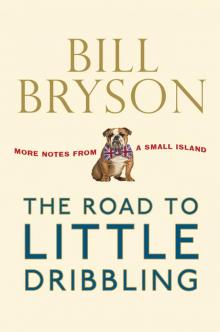 The Road to Little Dribbling
The Road to Little Dribbling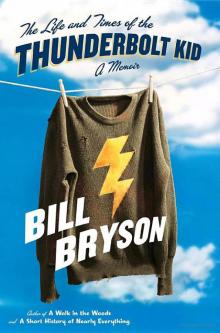 The Life And Times Of The Thunderbolt Kid: A Memoir (v5.0)
The Life And Times Of The Thunderbolt Kid: A Memoir (v5.0) Made In America
Made In America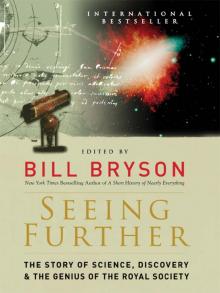 Seeing Further
Seeing Further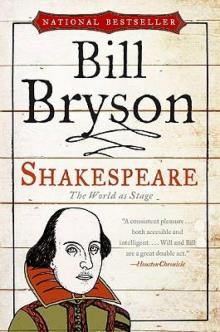 Shakespeare: The World as Stage
Shakespeare: The World as Stage The Life and Times of the Thunderbolt Kid
The Life and Times of the Thunderbolt Kid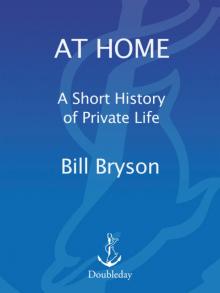 At Home
At Home Bryson's Dictionary For Writers And Editors (v5.0)
Bryson's Dictionary For Writers And Editors (v5.0) Neither Here Nor There
Neither Here Nor There Bill Bryson's African Diary
Bill Bryson's African Diary